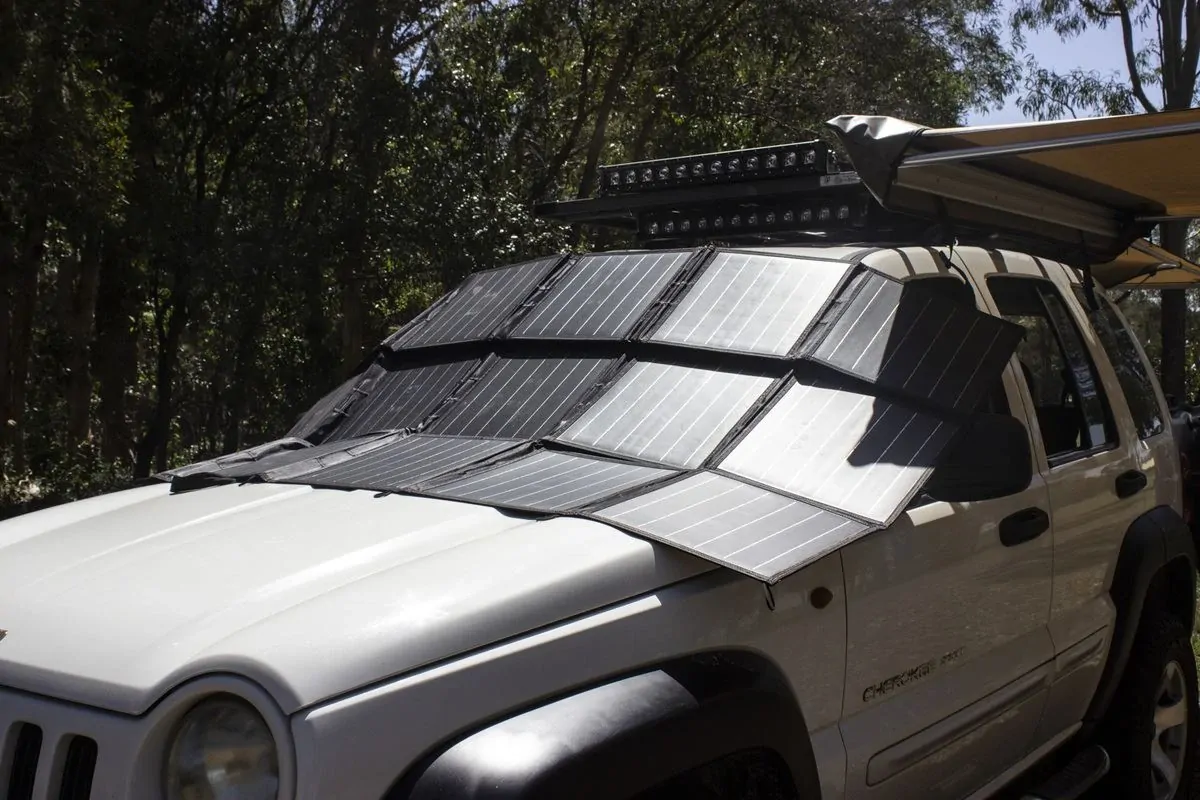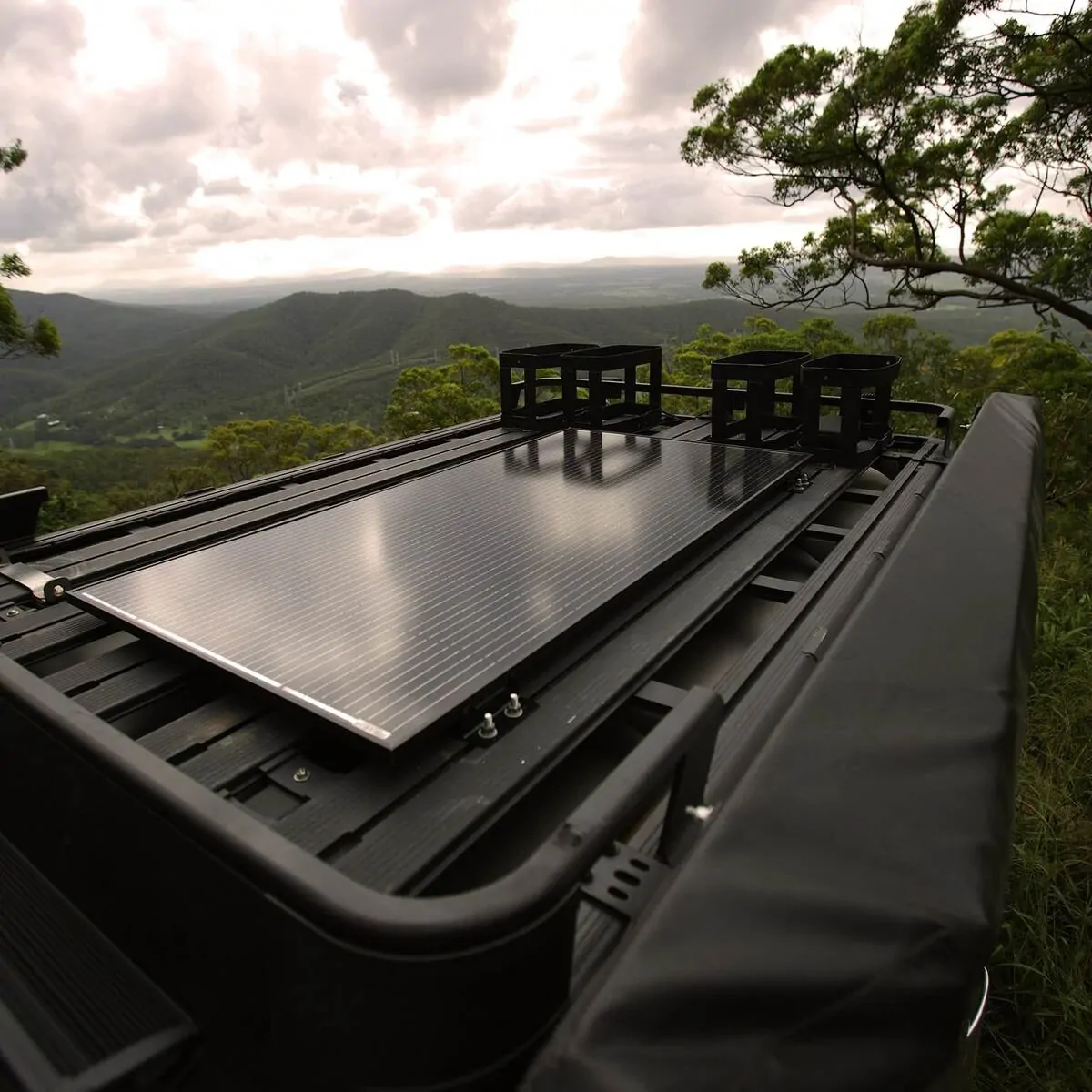How to Charge a 12V Battery Using Solar Panels: A Complete Guide to Solar Charging

Charging your batteries with solar power is a game-changer for those venturing into the Australian outback. It harnesses the energy from the sun to keep your 12V batteries fully charged and ready. This method is not only practical but also sustainable and renewable energy source, making it ideal for remote adventures.
Using solar power in the outback offers many benefits. It’s eco-friendly and cost-effective. Solar panels provide a reliable source of power without the noise of generators. With minimal maintenance, you can enjoy the peace of nature without worrying about your energy needs. Solar charging ensures you have the power to keep exploring the vast Australian wilderness.
Understanding Solar Panels
There are three main types of solar panels: fixed, portable, and folding. Each type has its advantages and is suited for different needs.
Fixed Solar Panels

Fixed solar panels are mounted permanently on a surface, like the roof of a vehicle or building. They are ideal for long-term setups where you need a consistent power supply. Fixed panels are durable and can withstand harsh weather conditions. They work well for caravans, motorhomes, and off-grid cabins. The main advantage is their stability and ability to capture sunlight all day.
Portable Solar Panels

Portable solar panels are lightweight and easy to move. They are perfect for those who need power on the go. These panels can be set up quickly and packed away when not in use. They are great for camping, road trips, and outdoor activities. Portable panels offer flexibility and convenience, making them a favourite for adventurers.
Folding Solar Panels

Folding solar panels are like portable ones but are even more compact. They fold up like a briefcase, making them easy to carry and store. These panels are ideal for travellers with limited space. You can lay them out on the ground or any flat surface to capture sunlight. Folding panels provide a good balance between power output and portability.
TIP: Recommended Read on How to choose solar panels for your caravan
How Solar Panels Work
Basic Functionality of Solar Panels
Solar panels capture sunlight and convert it into electricity using photovoltaic cells. These cells, made of materials like silicon, generate direct current (DC) electricity when exposed to sunlight. To use this electricity for appliances, an inverter is needed. The inverter converts DC electricity to alternating current (AC), making it compatible with standard AC devices.
Solar Panels and 12V Batteries
Solar panels can charge 12V batteries, providing a consistent and reliable power source. The electricity generated by the panels is stored in these batteries for later use. With this you have a steady supply of power even when the sun isn't shining.
Solar Regulators: Keeping Your Battery Safe
A solar regulator, also known as a charge controller, manages the power from the solar panels to the battery. It ensures the battery doesn't overcharge or discharge too much. This protects the battery and extends its lifespan.
There are two main types of solar regulators: PWM (Pulse Width Modulation) and MPPT (Maximum Power Point Tracking).
PWM (Pulse Width Modulation)
PWM regulators are simpler and cheaper. They work by reducing the power flow once the battery reaches a certain voltage. This prevents overcharging but operates at about 70% efficiency. PWM is good for smaller systems and for reducing the cost.
MPPT (Maximum Power Point Tracking)
MPPT regulators are more advanced and efficient. They adjust the power input to get the most energy from the solar panels. This type of regulator converts excess voltage into extra current, operating at about 97% efficiency. MPPT is ideal for larger systems where maximum efficiency is needed.
How to Charge a 12V Battery with Solar Panels

The image is with the example of the Redarc BMS1230
Charging a 12V battery with solar panels is a straightforward process.
Steps to Charge a 12V Battery
-
Ensure you have a solar panel, a solar regulator for example a DC to DC charger with solar input, and the necessary cables. Common connectors include MC4 plugs for solar panels and ring terminals for battery connections.
-
Position the Solar Panel: Place the solar panel in a spot with maximum sunlight. Adjust the angle for optimal sun exposure.
-
Connect the Solar Panel to the Regulator: Attach the positive and negative wires from the solar panel to the corresponding inputs on the solar regulator. Use MC4 connectors for a secure and weatherproof connection.
-
Connect the Regulator to the Battery: Link the regulator’s output wires to the battery terminals using ring terminals. Ensure correct polarity to avoid damage.
-
Monitor the Charge: Check the solar regulator’s display to monitor the charging status. Ensure the battery is charging correctly and not overheating.
Following these steps will keep your 12V battery charged and ready for use. Proper monitoring ensures the system works efficiently and safely.
Determining Your Solar Power System Needs
Calculating Your Power Requirements
To calculate your power needs, start by listing all devices you plan to power. Note the wattage and the hours each device will run daily. Multiply the wattage by the hours to find the daily watt-hours (Wh) for each device. Add all the daily watt-hours to get the total energy consumption.
For example, if you have a light that uses 10 watts for 4 hours, a TV that uses 100 watts for 1 hour, and a fridge that uses 50 watts for 24 hours:
10W×4h=40Wh
100W×1h=100Wh
50W×24h=1200Wh
Total: 40Wh+100Wh+1200Wh= 1340Wh
This total is the amount of energy you need per day.
Choosing the Right Solar Panel Size
Once you know your power needs, choose the right size solar panel. Divide your total daily watt-hours by the average sun hours per day. This gives you the required solar panel wattage. In Australia, you get about 5 sun hours per day depending on the season.
Using the example above:
1340Wh/5h=268W1340Wh/5h=268W
It’s wise to add a 20% buffer to your calculations. This covers losses from panel angle, dust, and temperature. Accounting for this:
268W×1.2=321.6W
Round up to the next standard panel size. In this case, a 350W solar panel would be suitable. This ensures you have enough power even on cloudy days.
With these calculations and the right panel size, you can ensure reliable power for your outback adventures.
Conclusion
Charging a 12V battery using solar energy is a fantastic option for anyone exploring the Australian outback or enjoying a camping trip. Solar charging is eco-friendly, cost-effective, and reliable. It provides a steady power supply without the noise and hassle of generators.
FAQ
How many solar panel do I need to charge a 12V battery charged?
The size of the solar panel needed depends on your energy consumption and sunlight availability. For a basic setup, a 100W solar panel is generally sufficient to keep a 12V battery charged, but this can vary based on your specific requirements and usage.
How long will a 100W solar panel take to charge a 12V battery?
The size of the solar panel needed depends on your energy consumption and sunlight availability. For a basic setup, a 100W solar panel is generally sufficient to keep a 12V battery charged using solar energy, but this can vary based on your specific requirements and usage.
What are the Most popular batteries to charge with a solar panel
AGM Batteries: AGM batteries are popular for its' ability to handle deep discharges and high discharge rates. They have a longer lifespan compared to traditional flooded lead-acid batteries and are safer due to their sealed design.
Lithium Batteries (LiFePO4): Lithium Iron Phosphate batteries are highly efficient and have a much longer lifespan than lead-acid batteries. They can be discharged to a lower state of charge without damaging the battery, providing more usable capacity. Their lightweight nature makes them easier to handle and install, and they have a higher energy density, meaning more power in a smaller package.

